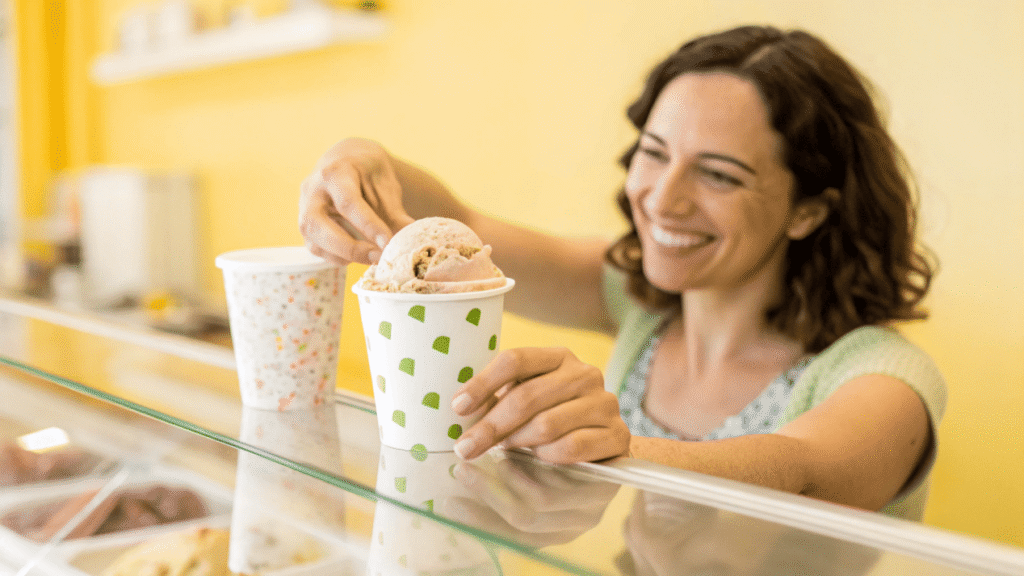Your ice cream shop uses hundreds of plastic cups a day, adding to a global crisis. This pollution harms our oceans and can damage your brand's reputation.
Paper cups tackle this by replacing fossil fuel-based plastic with a renewable, biodegradable option. This single change reduces landfill waste, appeals to eco-conscious consumers, and strengthens your brand.
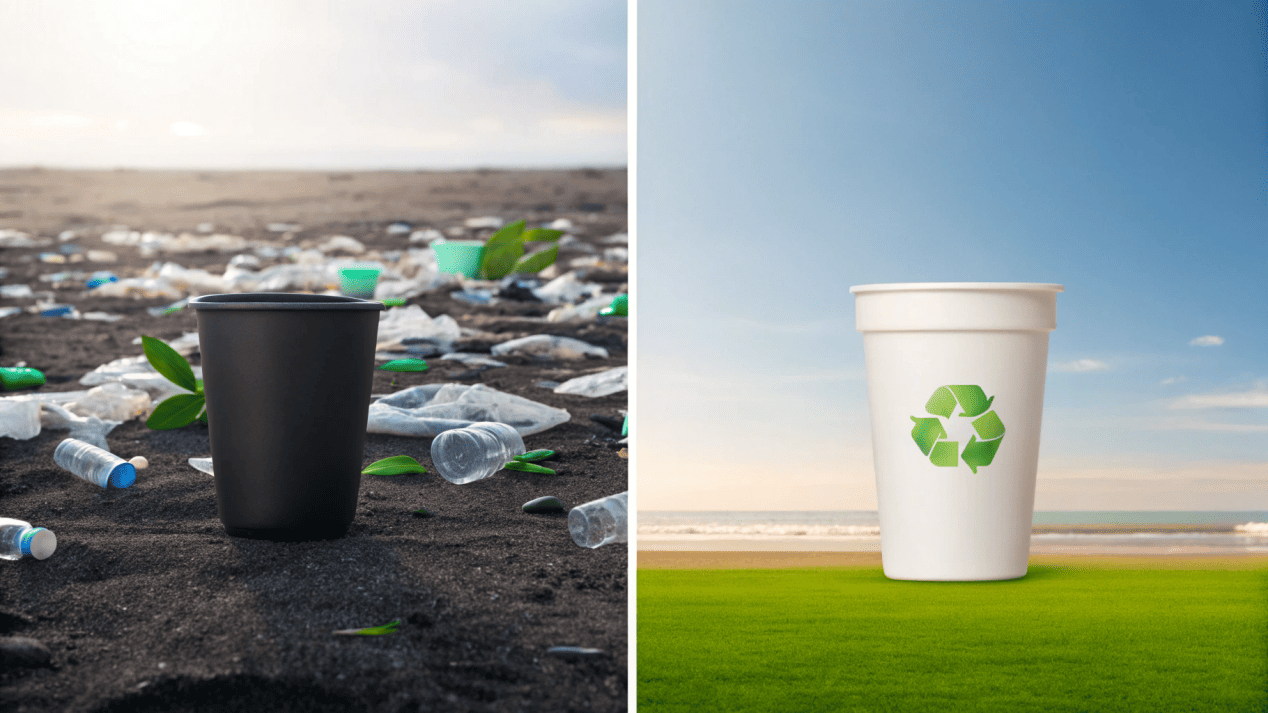
I talk to business owners every day who feel stuck. They want to do the right thing for the environment, but they also have to run a profitable business. They see the headlines about plastic pollution and worry they are part of the problem. The good news is that there is a simple, effective first step you can take. Switching from plastic to paper ice cream cups is more than just a small change; it's a powerful statement that has real, positive effects on the planet and your business.
Do paper cups truly replace harmful plastics?
You see plastic everywhere, a seemingly permanent problem. You wonder if one paper cup can really make a difference against mountains of plastic waste.
Yes. Paper comes from renewable trees, a stark contrast to plastic from finite fossil fuels. It biodegrades in months, while plastic lasts for centuries, breaking down into toxic microplastics.
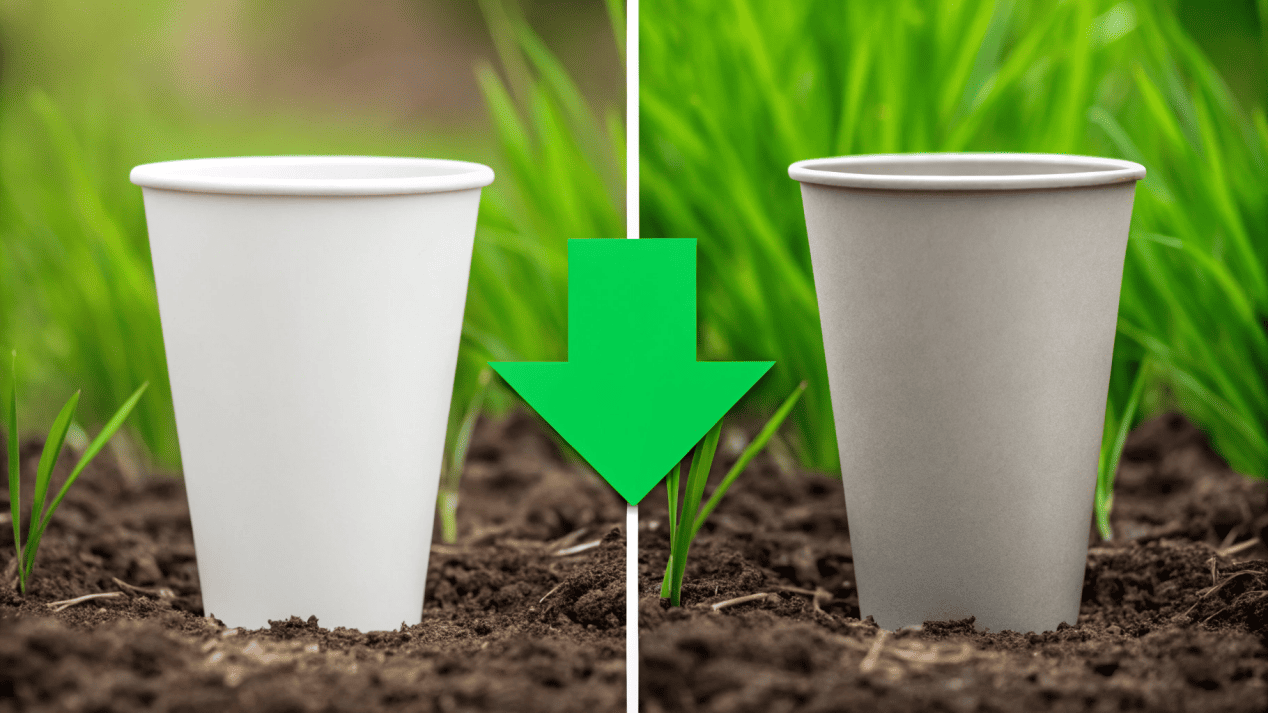
The fundamental difference lies in where the materials come from and where they go. I always explain this to my clients because it's the core of the issue. A plastic cup begins its life as crude oil, a non-renewable fossil fuel. After a single use, its journey ends in a landfill or, worse, our oceans. It will stay there for 500 years or more. It never truly goes away; it just breaks into smaller and smaller pieces called microplastics that poison wildlife and enter our food chain.
A paper cup, on the other hand, starts in a sustainably managed forest where trees are replanted. Its journey ends by breaking down naturally, returning to the earth.
The Real Difference: Source to Grave
| Feature | Plastic Ice Cream Cup | Paper Ice Cream Cup |
|---|---|---|
| Raw Material | Fossil Fuels (Non-renewable) | Wood Pulp (Renewable) |
| End of Life | Persists for 500+ years | Biodegrades in months |
| Byproduct | Harmful Microplastics | Organic Matter |
| Carbon Footprint | Generally Higher | Generally Lower |
By choosing paper, you are cutting off the problem at its source. You are stopping another piece of permanent plastic from ever being created. That is how you make a real difference.
Do customers actually care if you use paper cups?
You're considering the switch but worry about the extra cost. Will your customers even notice the change, or is it an expense without a return?
They care deeply. Consumers see paper as safer and more eco-friendly. Studies show many will pay more for sustainable packaging and actively choose brands that ditch single-use plastic.
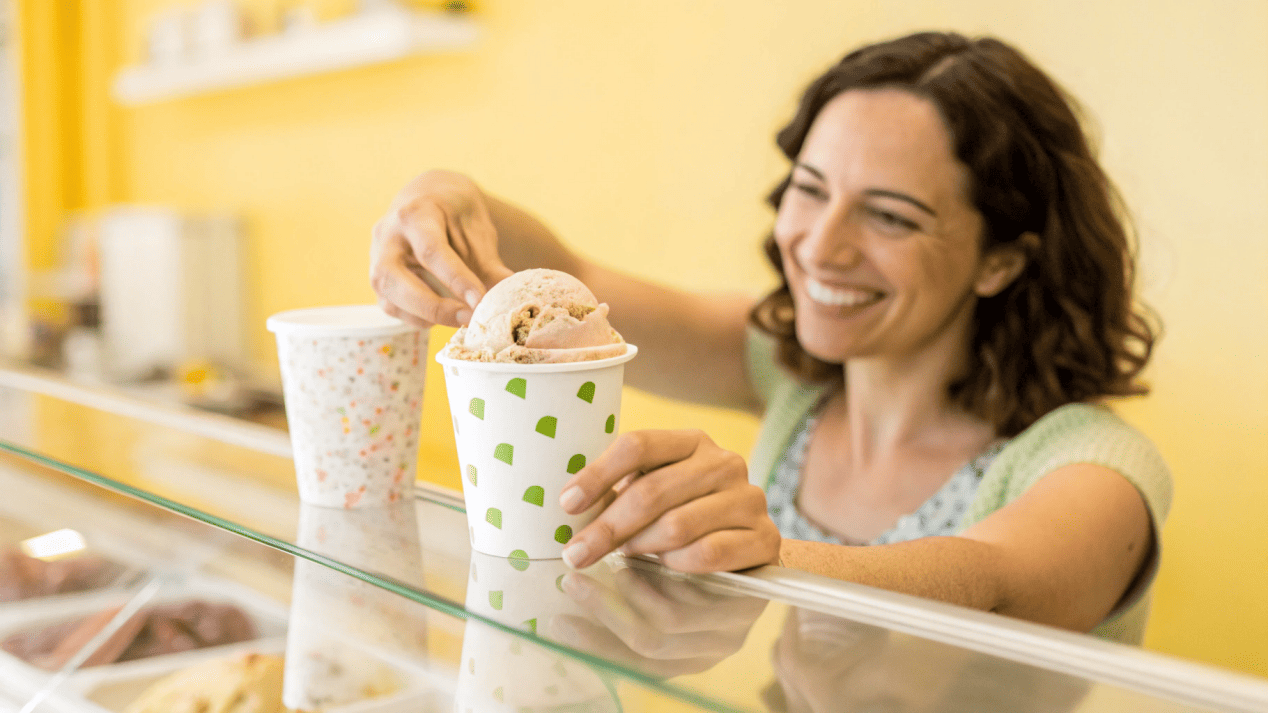
A few years ago, I had a client who ran a small chain of frozen yogurt shops. He was hesitant to switch to our PLA-lined paper cups because they cost a few cents more than his plastic ones. I encouraged him to try it at just one location and to put up a small sign explaining the change. The results were astounding. Sales at that location increased by nearly 10% in three months. Customers told his staff they came specifically because they heard he had switched to compostable packaging.
This isn't an isolated story. Modern consumers, especially younger generations, vote with their wallets. They are not just buying a product; they are buying into the values of a brand. They perceive paper as a cleaner, safer choice, free from chemicals like BPA that they worry about in plastics. Surveys consistently show that a majority of consumers view paper as more environmentally friendly. Almost 40% state they are willing to pay more for that sustainability. Using paper packaging is no longer just an operational detail; it's a powerful marketing tool.
Aren't paper cups difficult to recycle properly?
You've heard that paper cups contain a plastic lining, making them a recycling nightmare. You don't want to solve one environmental problem just to create another.
It has been a challenge, but technology is solving it. Modern PLA-lined cups are commercially compostable, and new water-based coatings are making paper cups much easier to recycle in standard facilities.
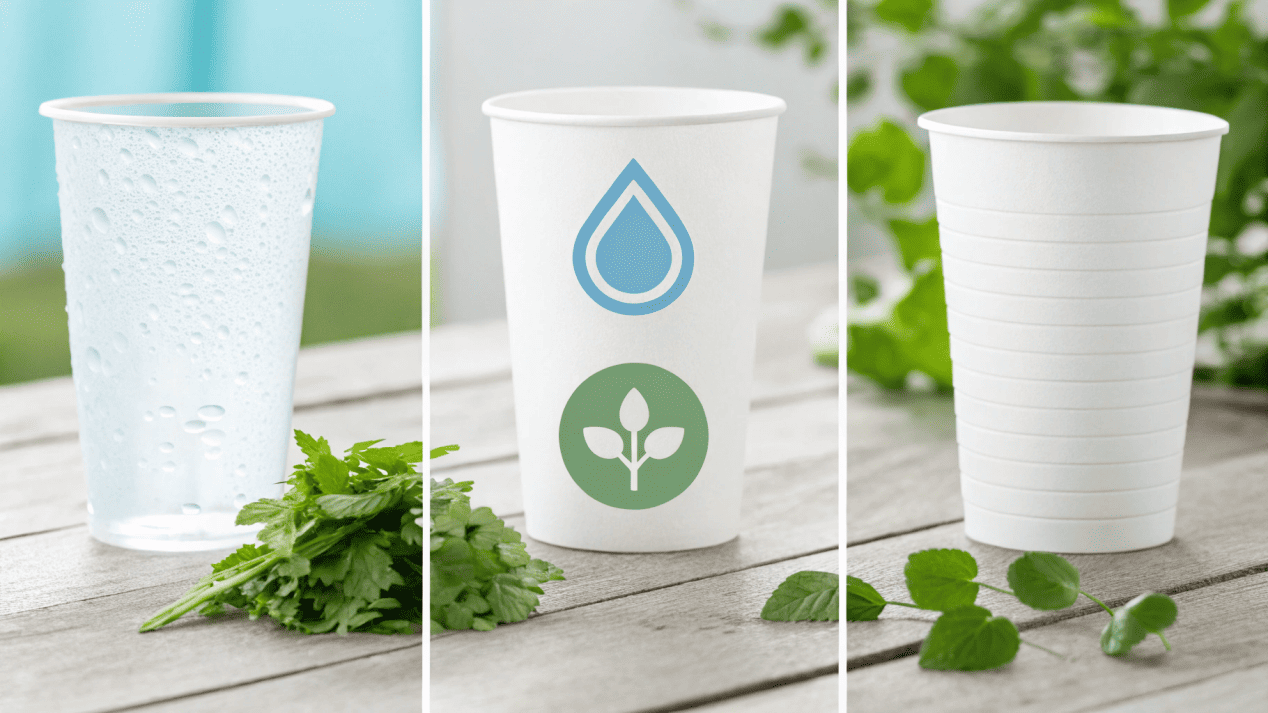
This is an important and honest question. In the past, it was a major issue. But the industry has evolved. Let's break down the technology, because this is where my mechanical engineering background gets really useful for my clients.
Understanding the Linings
The inside of a paper cup needs a waterproof barrier. For decades, that barrier was polyethylene (PE), a type of plastic. Separating this PE film from the paper fiber is difficult and requires special recycling plants that are not common. This is the source of the recycling problem.
However, the industry has innovated two great solutions:
- PLA (Polylactic Acid) Lining: This is a bioplastic made from plants like corn. A PLA-lined cup is not meant for traditional recycling. Instead, it is designed to be commercially compostable. In a large-scale composting facility, it will break down completely into organic matter. The challenge here is making sure these facilities are available in your city.
- Water-Based Coatings: This is the newest and most exciting innovation. These advanced coatings provide the same waterproof barrier but are designed to break down easily during the standard paper recycling process (repulping). This means the cup can be recycled along with other paper and cardboard products.
The key is to ask your supplier what kind of lining they use and to choose the one that best fits the disposal infrastructure in your area.
Can choosing paper cups actually help grow your business?
You operate in a very competitive market. You are constantly looking for a way to make your brand stand out and build a real connection with customers.
Absolutely. Using paper cups is a strategic marketing move. It positions your brand as responsible and modern, attracting loyal customers and helping you comply with upcoming plastic bans.
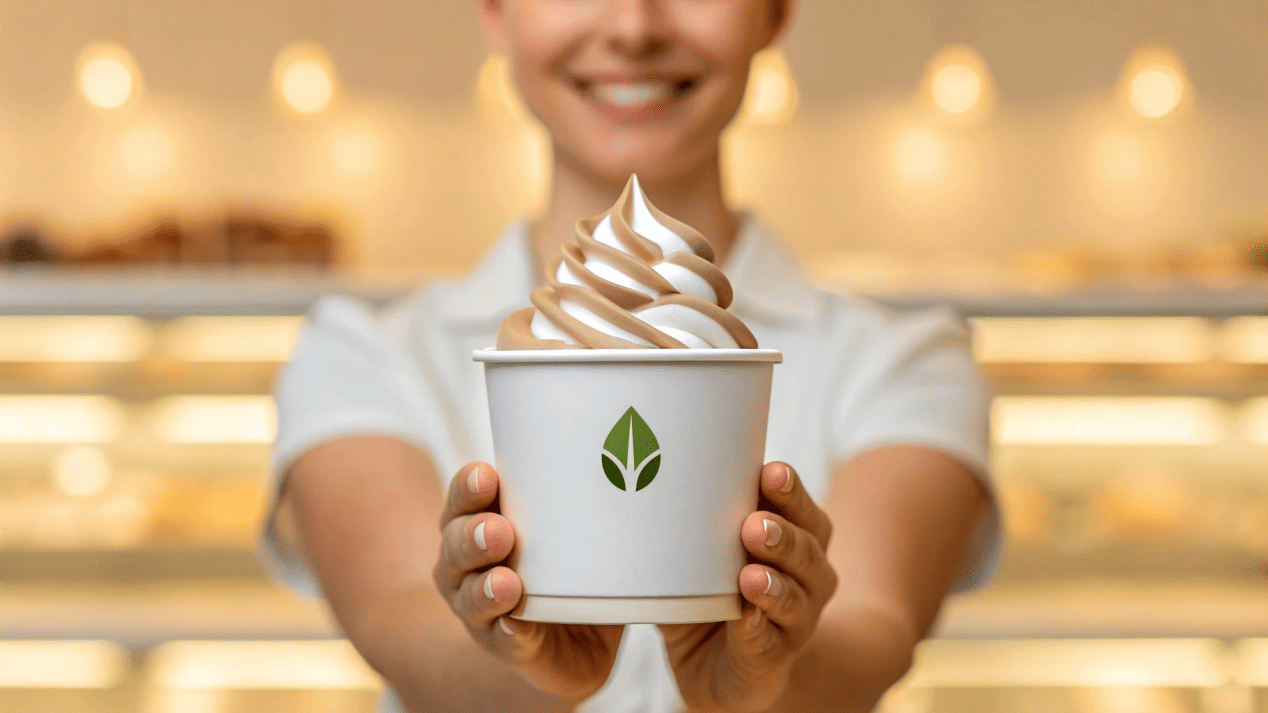
I tell every client that their packaging is one of their most powerful marketing tools. It's a walking billboard for your brand. When that billboard is a paper cup, it tells a very specific story. It says your brand is modern, responsible, and cares about the future. This isn't just a nice feeling; it's a real competitive advantage.
First, it helps you meet regulations. Governments all over the world are banning single-use plastics. By switching to paper now, you are future-proofing your business and avoiding fines. You become a leader, not someone who is forced to change.
Second, it differentiates you from your competition. Imagine two ice cream shops side by side. One uses generic foam cups, and the other uses beautifully branded, eco-friendly paper cups. Which one do you think the environmentally-conscious customer will choose? You are aligning your brand with the positive values of your target audience. This builds a deeper connection than just the product itself, fostering true brand loyalty. It gives you a positive story to tell on social media and in your marketing, turning a simple cup into a powerful message.
Conclusion
Switching to paper ice cream cups is a smart decision. It directly reduces plastic pollution, attracts modern consumers, and builds a powerful, responsible brand for the future.
